Known for its iconic semi-monocoque, riveted aluminum travel trailers, Airstream ventured into new territory nearly five decades ago with its first motorized units. With the debut of the Argosy Motorhome line in 1974, Airstream entered the unfamiliar world of steering wheels and engines. Today, Airstream touring coaches are recognized among the most luxurious and well-appointed motorized RVs on the market. With every attention paid to the details – and every safety and performance feature offered by Mercedes-Benz® – Airstream touring coaches are truly best in class.
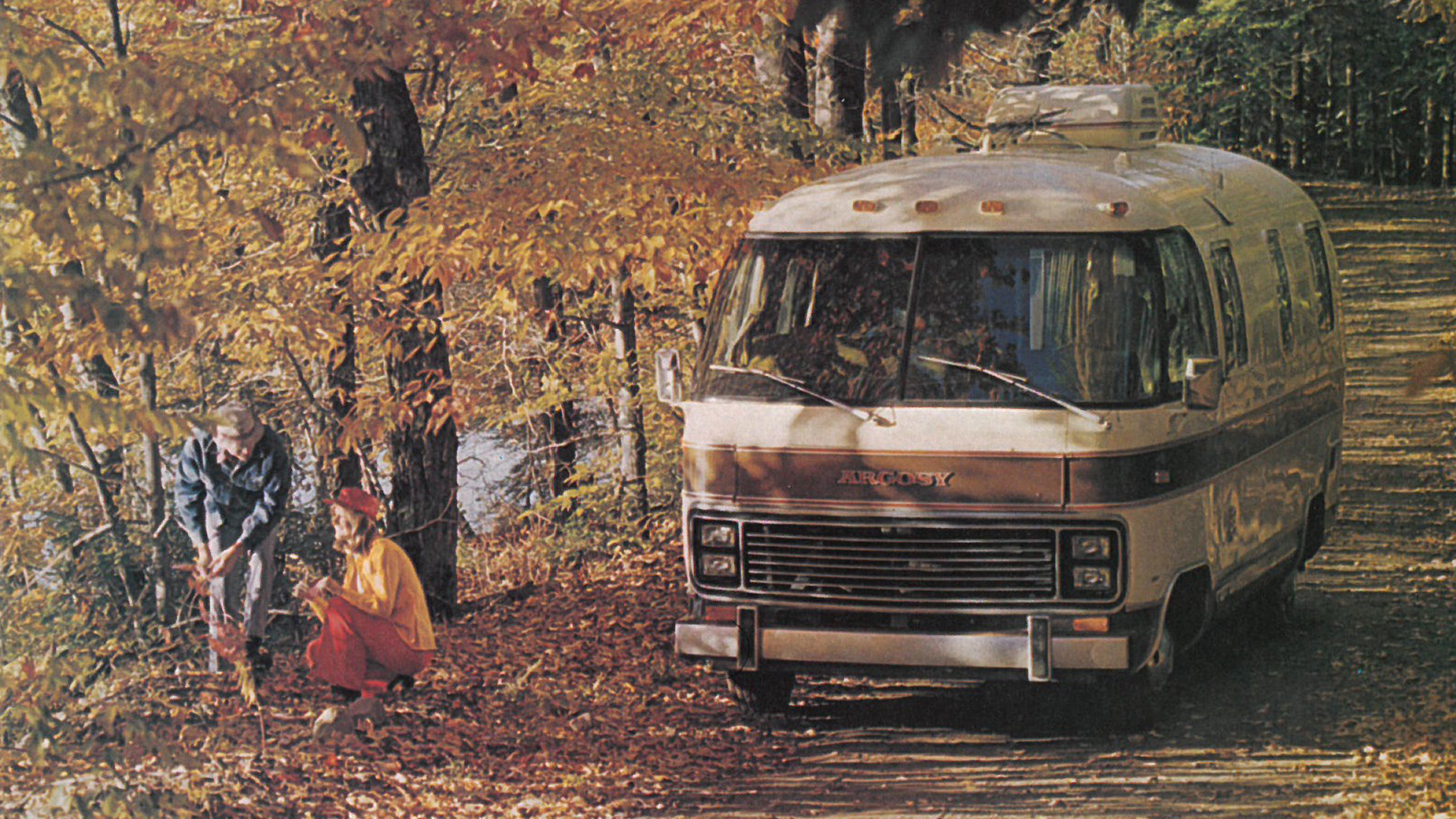
Ninety years after Wally Byam founded Airstream, the pursuit of excellence he inspired remains alive and well within the touring coach line at Airstream headquarters in Jackson Center, Ohio. After travel trailer production moved across town into its new home in early 2020, Airstream’s touring coach operations migrated into the now-empty 250,000 sq ft facility. With more room came more opportunities to innovate, more attention to detail, and more quality craftmanship that would make Wally Byam proud.
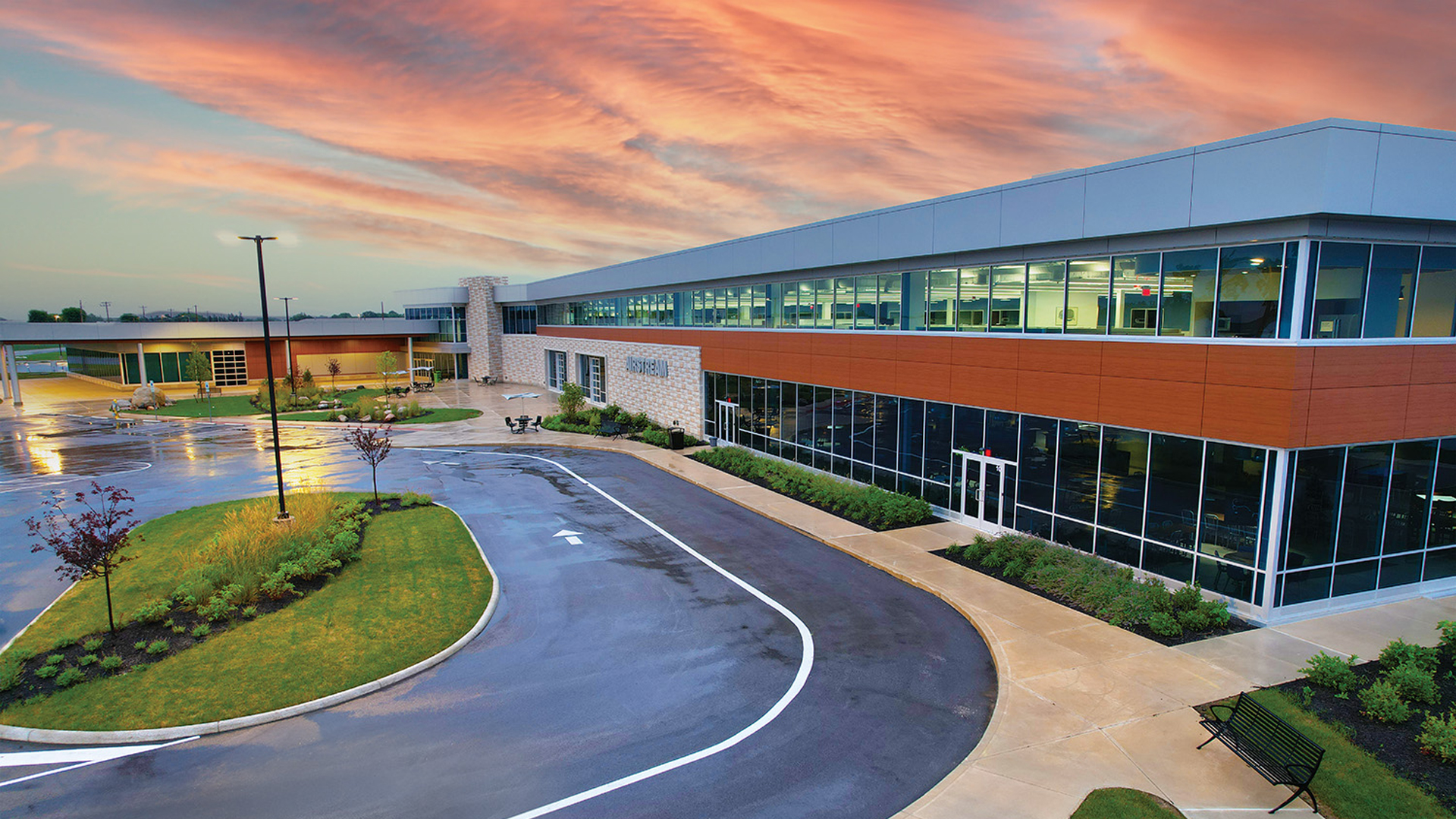
Airstream’s nearly 50-year motorized history is rich with innovation – and a fair share of twists and turns. Applying its iconic travel trailer aesthetic to motorized recreational vehicles wasn’t easy – but like Wally Byam (who passed away a decade before the first motorized Airstreams were produced), the company he founded always chose to do things the right way, rather than the easy way. Wally famously said that Airstream would only make improvements to its products – never changes simply for the sake of change. That innovative spirit led equally to challenge and success, paving the way for a motorized line of Airstream touring coaches that stand proudly beside their travel trailer cousins.
This fascinating history is on display at the Airstream Heritage Center inside Airstream Headquarters in Jackson Center. Now open to the public, the Heritage Center lets visitors step back in time through in-depth exhibits and more than a dozen vintage units on display – including a rare Airstream Funeral Coach unit that highlights one of the most interesting chapters in company history. Plan your visit today – and read on for the inside scoop on the nearly 50-year history of Airstream’s motorized RVs.
Paving the Way: The Argosy Motorhome
In the hopes of opening new markets for customers looking to hit the road, Airstream began investigating what it would take to introduce a lower price point option in the early 1970s. The company purchased land in Versailles, Ohio (not far from the current headquarters) and construction began in the Fall of 1971 on the new 117,000 sq ft facility. Though they had yet to come up with a name for this new line of affordably priced travel trailers, the hope was to create a line of RVs that would feel at home alongside the rest of the Airstream family.
The Argosy Travel Trailer line began production in early 1972 and established itself as a brand at arm’s length from its parent company. Painting the aluminum set them apart from their shiny silver cousins (and helped hide any cosmetic defects), and the resulting “painted Airstreams” have become iconic in their own right. Perhaps more importantly, the Argosy line became a proving ground for a number of innovations – including the company’s first foray into the world of motorized RVs.
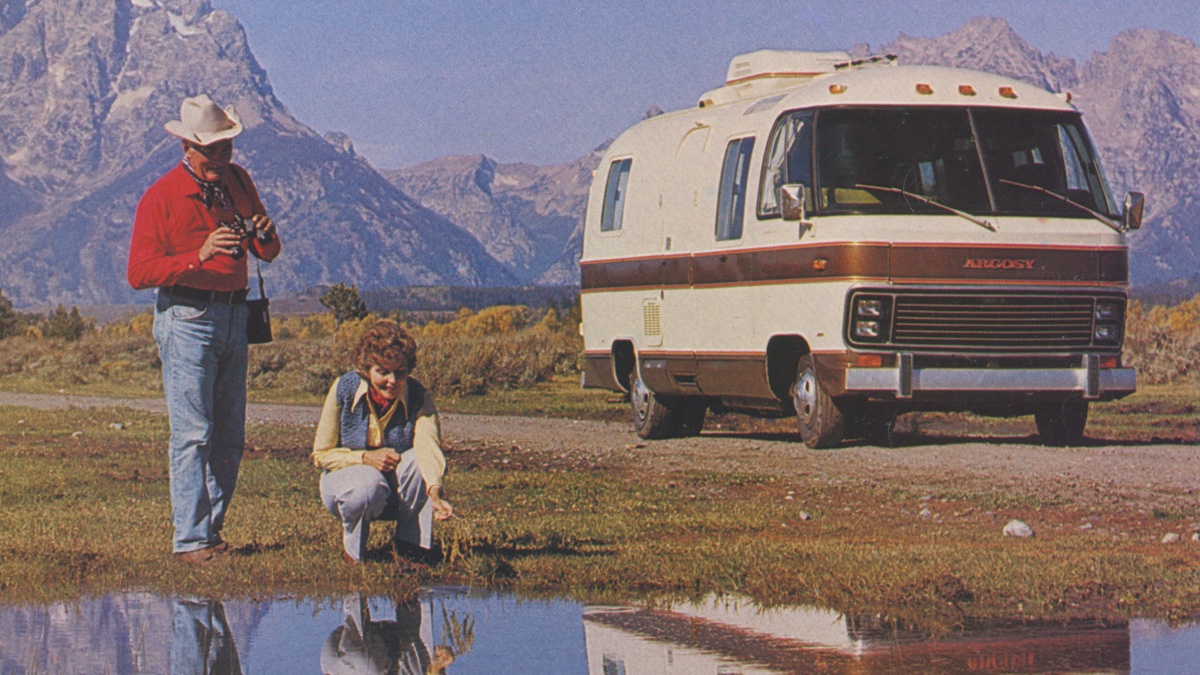
After the initial success of the Argosy Travel Trailer line, the Argosy Motorhome came along in 1974. The shape of the Argosy Travel Trailer was adapted to fit the drivetrain of the new Chevrolet chassis. Featuring a semi-monocoque, stress-skinned structure, wrap-around windows, and a painted beige exterior, the Argosy Motorhome was initially offered in 20 and 24 feet. Soon, Airstream also offered the Argosy Compact Bus, a commercial product modeled after the Argosy Motorhome, which became popular with municipal transport systems and similar clients. Airstream’s California plant began producing the Argosy Motorhome by 1975. A testament to the success of the Argosy Motorhome, the Airstream Motorhome was introduced in 1979 as the first proper motorized Airstream model.
Meeting Challenges Through Diversification: The A/van and Funeral Coach
The 1973 oil crisis led to fuel shortages and steep gas prices that directly impacted Airstream’s travel trailer sales. Determined to find ways of weathering the economic storm, Airstream established a Diversification Committee in hopes of identifying potential markets with a need for high-quality aluminum products. The Diversification Committee initiated several projects to offset lagging sales, the most successful of which was the development of utility and delivery vans.
Identifying bread companies, dry cleaners, florists, and potato chip companies as industries with a need for utility and delivery vans, the Diversification Committee recommended that Airstream design an all-aluminum, heavy-duty utility van. The result was the A/van.
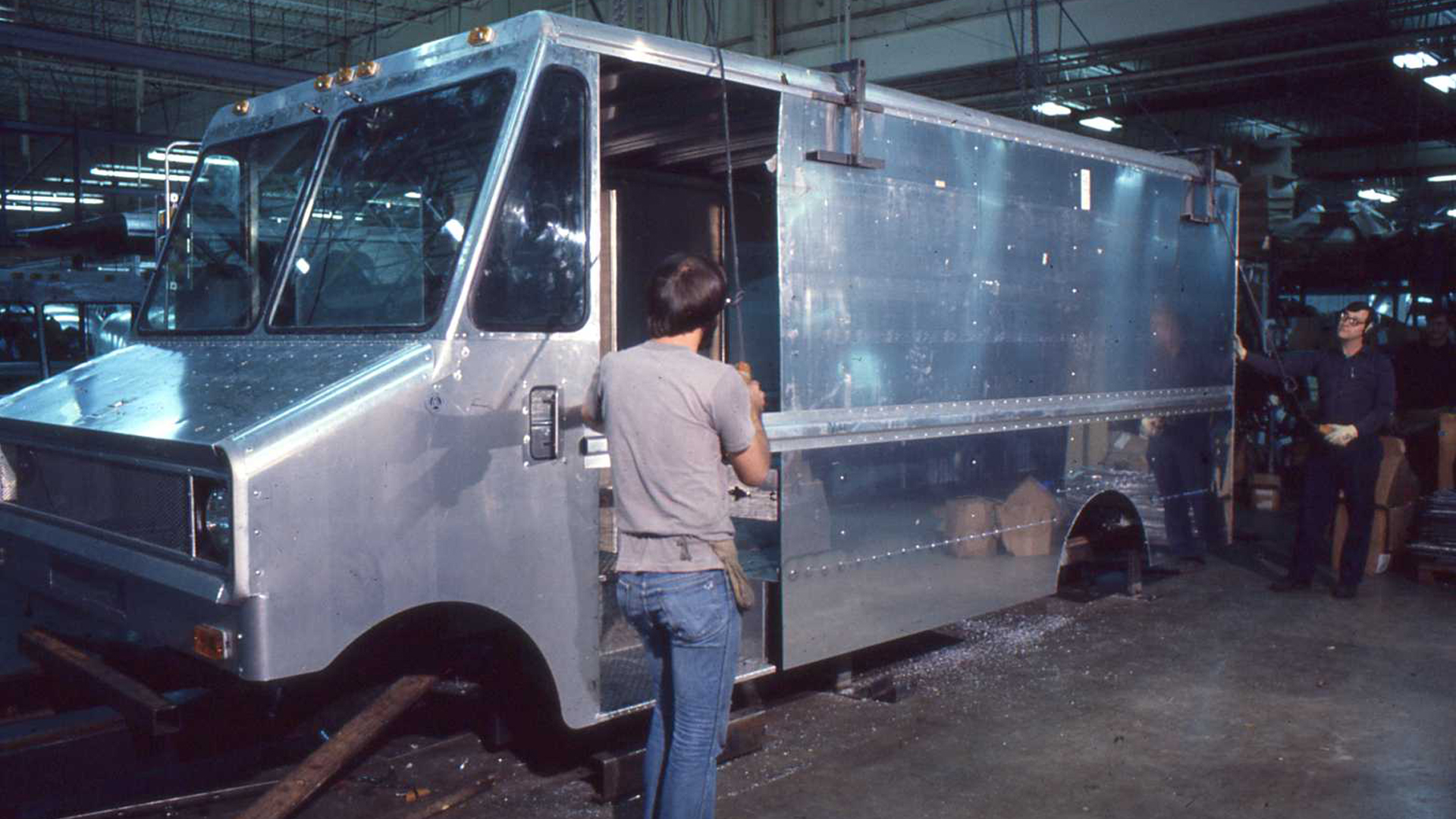
The A/van soon became a popular choice due to its quality design, all-riveted ruggedness, and efficient use of space. Businesses such as Quality Bakers of America, Frito-Lay, and Snap-On Tools quickly added A/vans to their fleet. The United Parcel Service (UPS) ordered several custom utility vans and the United States Postal Service (USPS) awarded Airstream a contract to build 647 A/vans.
During the 1980s, the company began branching out further into ancillary markets, designing motorhomes to meet specific commercial purposes. This customized line included the Air Coach, which allowed business professionals to work together on the road, and the Sales Coach which served as a mobile sales office or display room.
One of the more curious projects initiated during this era was the Airstream Funeral Coach. Launched in 1981 and marketed as a cost-effective solution for funeral homes, the Funeral Coach featured seating for 14, a large compartment for transporting a casket, and a back hatch that opened to a “trunk” area suitable for transporting flowers. It was presented as a fuel-efficient alternative that would reduce funeral procession traffic while maintaining dignity. Most importantly, it allowed families to travel together during a trying time.
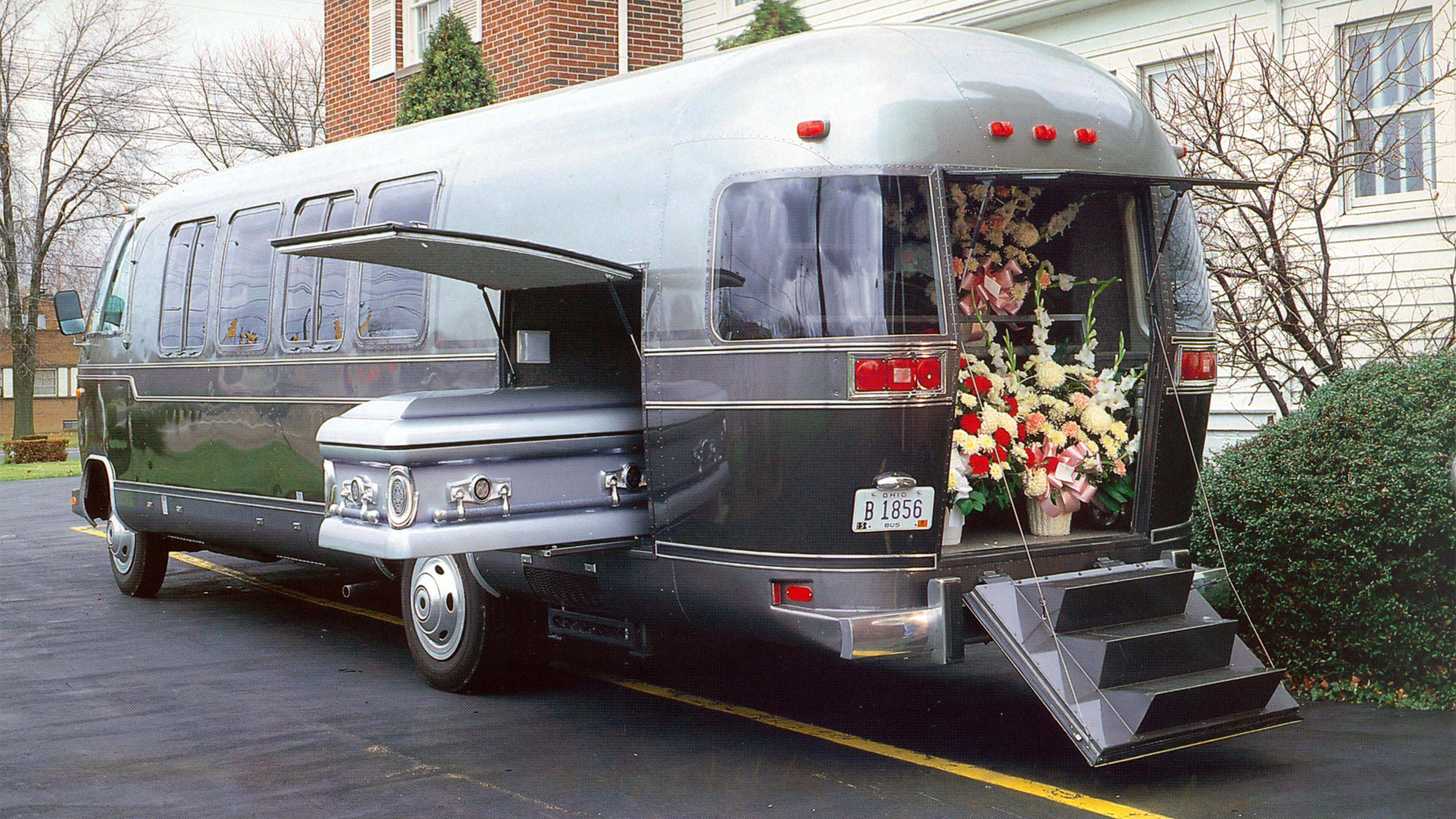
While it was a creative approach to diversification, only 32 Funeral Coaches were produced from 1981 to 1991. One of these rare models, a 1984 Funeral Coach, is now on display in Airstream’s new Heritage Center – one of the only places in the world to view this unique Airstream model in person.
One Leg of the Ultimate Adventure: The Astrovan and Astrovan II
After the Apollo program ended, NASA turned its attention to designing a new, reusable spacecraft. The resulting Space Shuttle program would ferry astronauts from earth into orbit from 1981 to 2011. The program saw early success with its first several launches, and soon NASA contracted with Airstream’s Commercial Department to build a trio of vehicles for use around Kennedy Space Center – including to ferry astronauts from crew quarters to the launchpad.
Three modified 1983 Airstream Excella Motorhomes were delivered to NASA, with one serving as a CTV and the other two serving as support vehicles. Beginning with STS-9 in November of 1983 and continuing until the Space Shuttle was decommissioned in 2011, one of these modified Airstream motorhomes served as the last earthbound leg of the Space Shuttle crews’ journey into orbit.
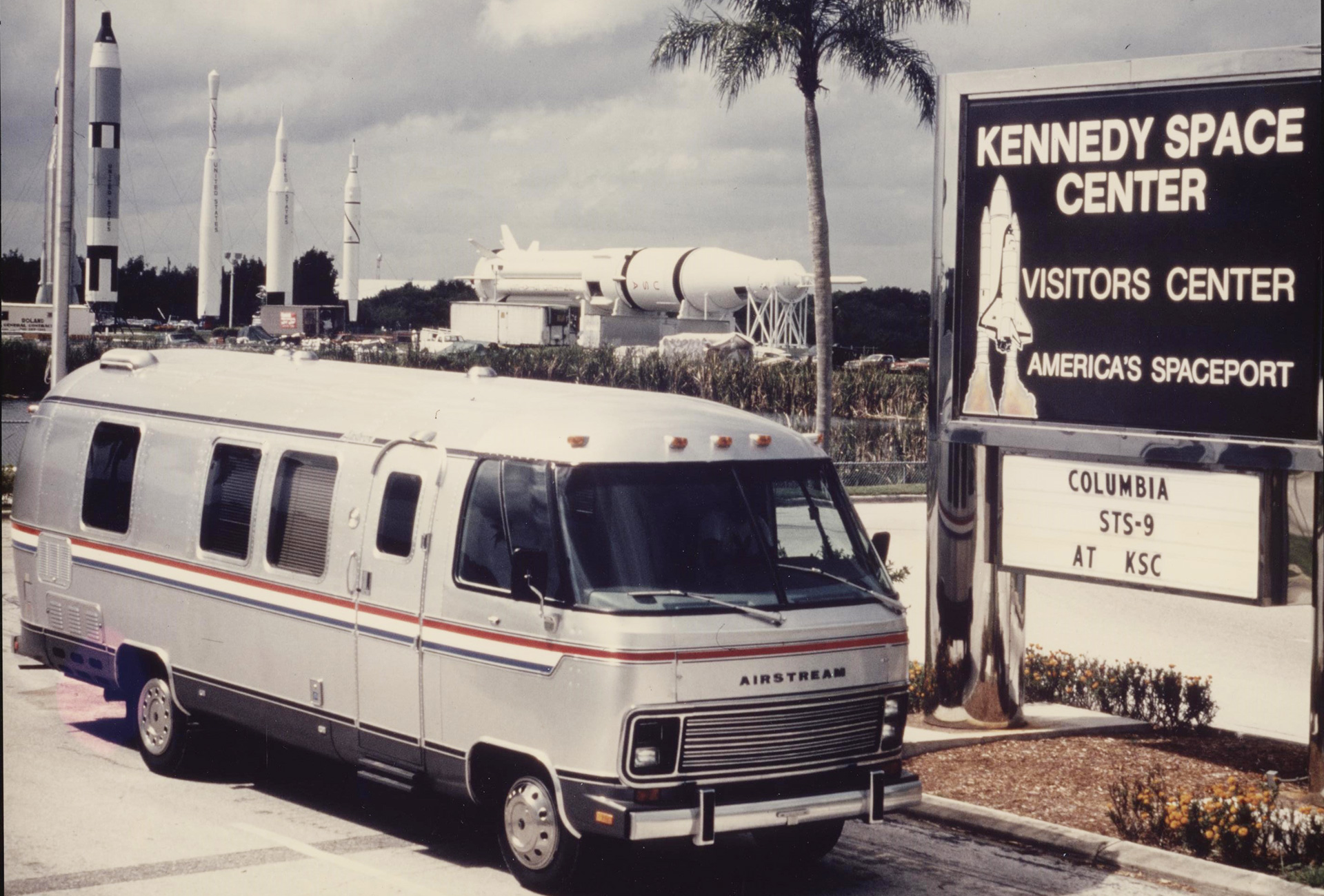
The vehicle’s renown only grew with each successive mission as Shuttle crews came to cherish the privacy and camaraderie they found on the ride out to the launchpad inside their silver sanctuary. The astronauts themselves nicknamed the vehicle “the Astrovan,” and by the end of the program the Astrovan had achieved a legendary status as part of America’s dedication to human spaceflight. Today, the original Astrovan sits proudly beside the Space Shuttle Atlantis inside the main exhibit hall at the Kennedy Space Center Visitor Complex.
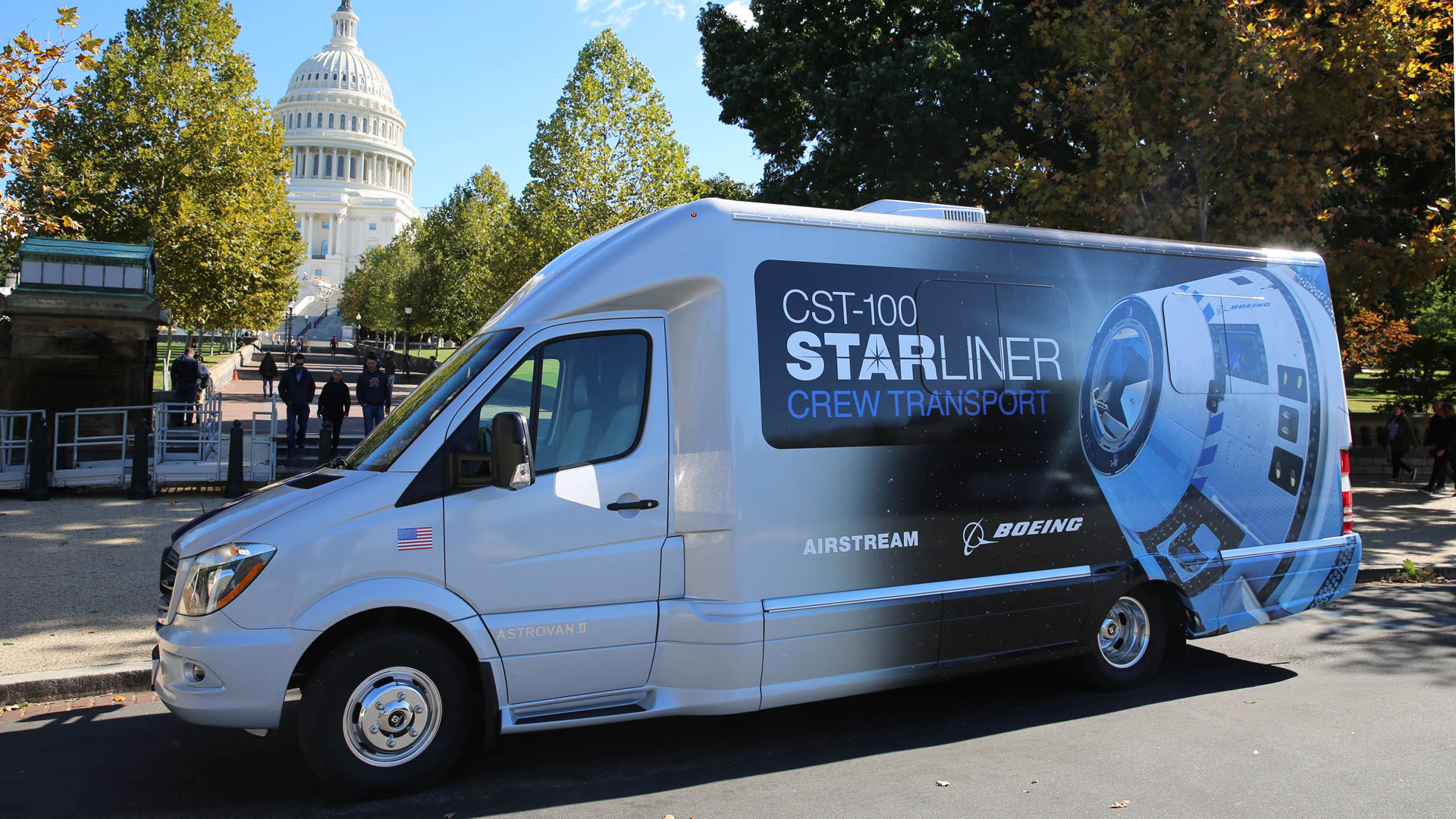
As the Space Shuttle program ended, NASA initiated the next phase of American spaceflight – the Commercial Crew Program. Led by competitors SpaceX and Boeing, the Commerical Crew Program began a new era of NASA working with outside companies to ship cargo and astronauts up to the International Space Station. While SpaceX “won” this modern space race by becoming the first commercial company to launch a crew to the ISS, Boeing is expected to launch their own crews in the coming months. And when they do, a modified Airstream Atlas Touring Coach will serve as the Crew Transport Vehicle for Boeing’s Starliner crews. Nicknamed “Astrovan II,” the new vehicle will soon take its place alongside its namesake in the pantheon of human spaceflight achievements when it begins ferrying Boeing crews to the launchpad.
A Motorized Silver Bullet: The Excella and Beyond
In 1979, the Argosy motorhome was replaced by the first Class A motorhome in the main Airstream product line. Initially offered as a 24- and 28-foot Excella or International, larger models (at 31’, 32.5’, 34.5’ and even a few at 37’) would appear during the 1980s. Unlike the Argosy models, these Airstream motorhomes showed off their shiny aluminum shells without paint. Today, these models are affectionately referred to as the Airstream Classic Motorhome.
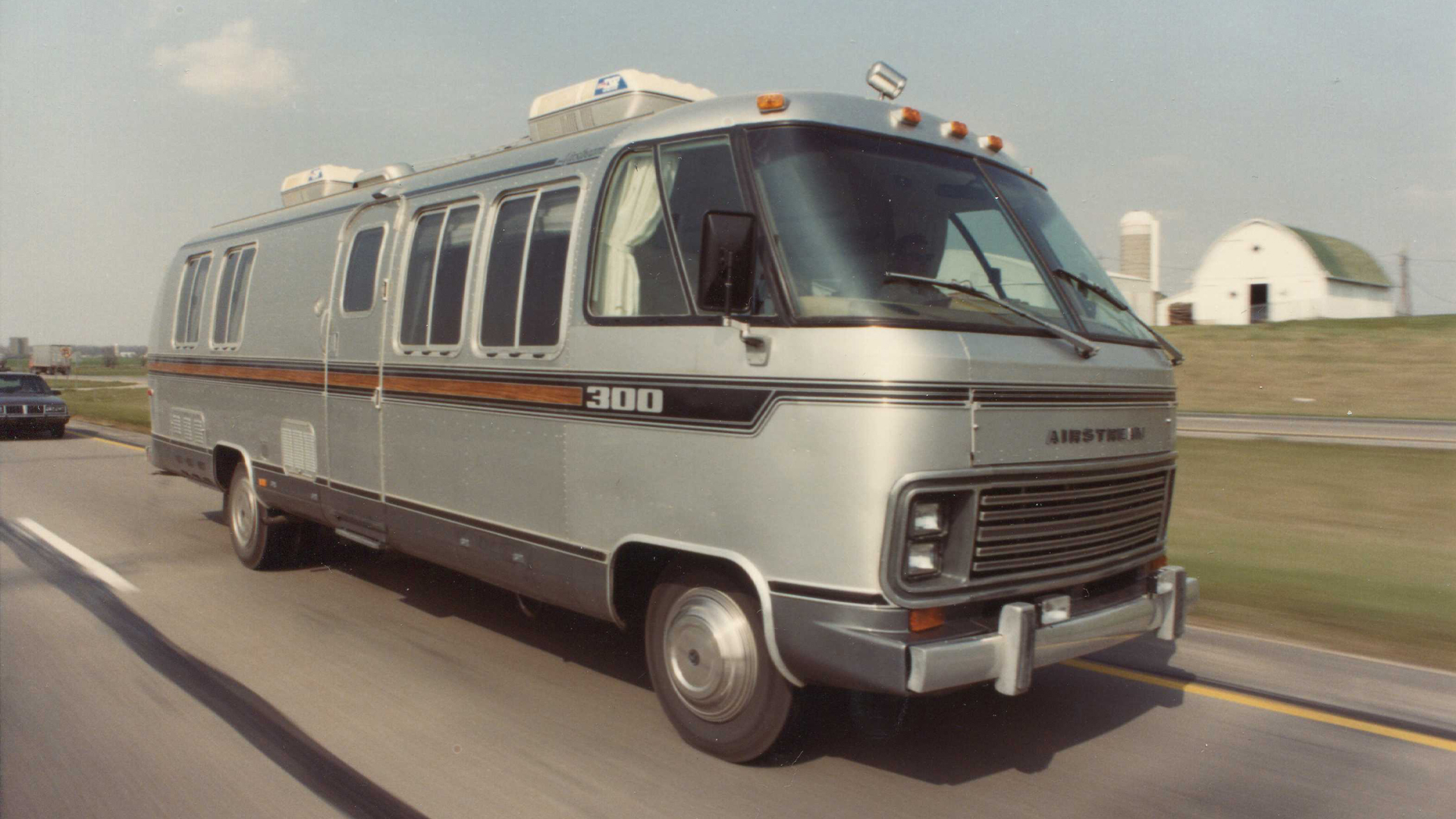
Ten years after the introduction of the first main line Airstream motorhome, the company introduced the Land Yacht Motorhome during the 1989 model year. Constructed of laminated fiberglass, the Land Yacht Motorhome’s innovative front and rear end cap design received a design patent. Throughout the next decade, Airstream introduced several other Class A motorhomes with fiberglass exteriors including the Legacy and Cutter models. These models offered popular features including basement storage and several different engine options – including the Cummins diesel.
Partly due to the success of the fiberglass models, by 1996, Airstream ended production of the aluminum-skinned Classic models. Production innovations continued in the fiberglass-sided motorhomes until 2006, including the beloved “SkyDeck” model in late 2002. The SkyDeck was the first motorhome in the industry to have a rooftop patio complete with a grilling area and cushioned seating. The deck could be accessed via residential stairs from inside the motorhome for outdoor entertaining.
New Products for a New Millenium
Airstream’s Commercial Department continued to grow into the new millennium thanks to the company’s innovations in the fiberglass motorhome market. The department produced countless specialized Airstream vehicles including mobile clinics, classrooms, hearing test labs, and even command centers for government organizations.
Today’s Airstream motorhomes are all built on the Mercedes-Benz Sprinter Van chassis. The innovations of the past stand as the prologue to this modern era, where richly appointed interiors and all the comforts of home make for an unparalleled travel experience. The first Interstate models were offered in 2004 but over time the line has grown to feature four different models: The twenty-four-foot Interstate 24GL, Interstate 24GT, Interstate 24X, and the nineteen-foot Interstate 19. In 2017, Airstream introduced the Atlas Touring Coach. Also built on the Sprinter chassis, the Atlas is wider and features the most luxurious interior of any motorized Airstream – complete with a slide-out that allows for an expanding Murphy Suite inside.
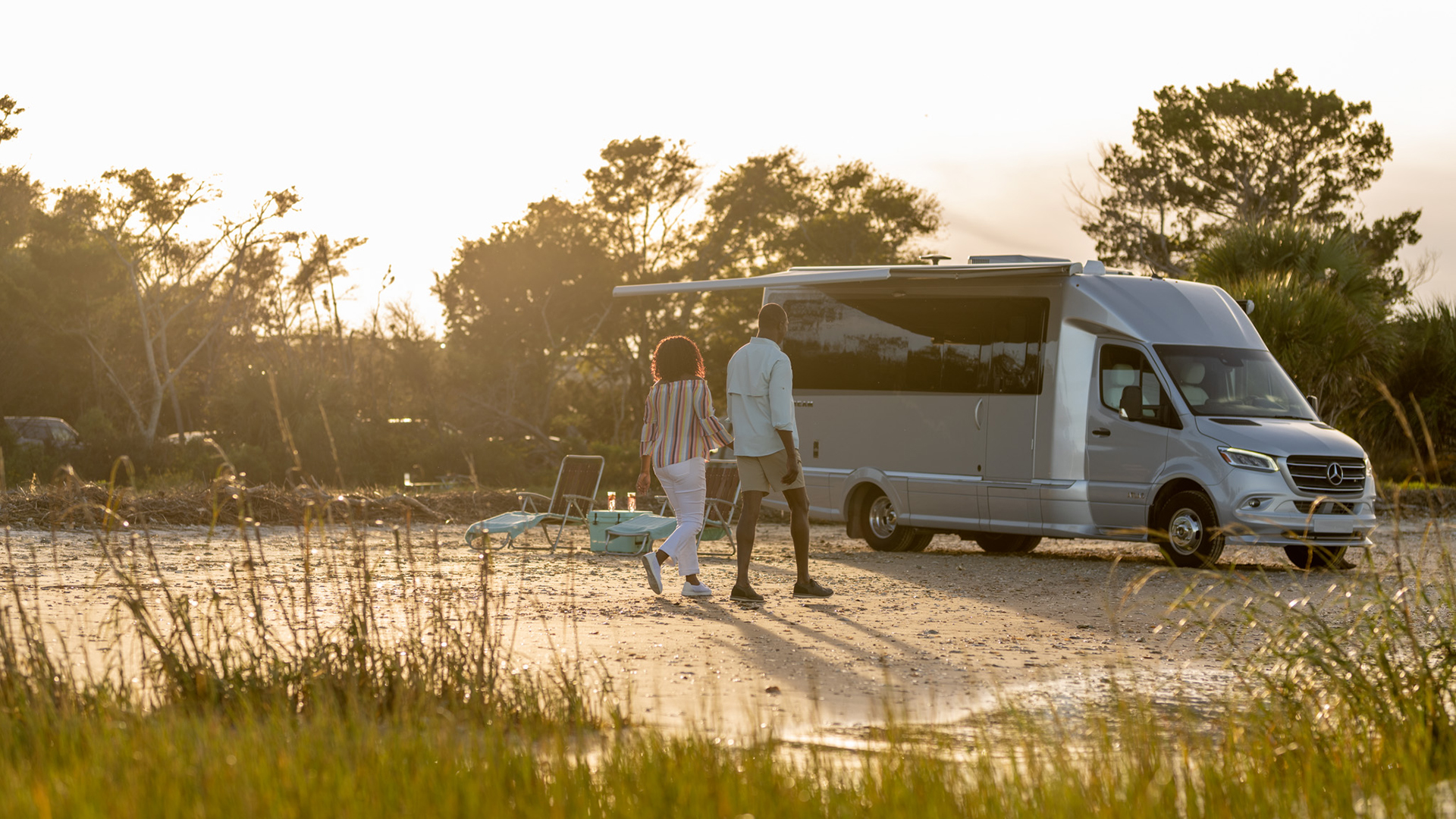
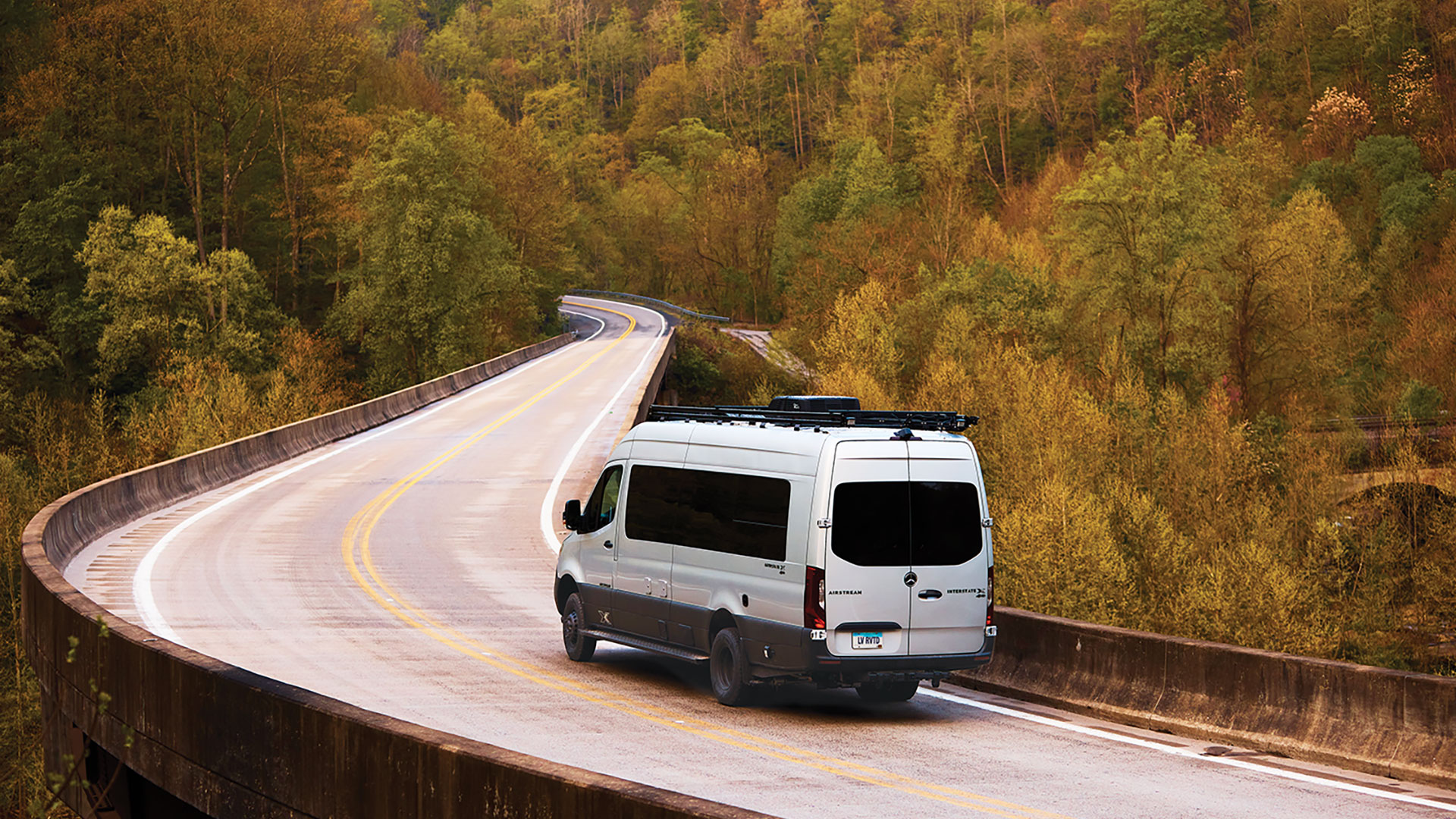
Today’s Interstate and Atlas lines owe some debt to the small Class B motorhomes Airstream produced in the late 1980s. The Airstream B-190 was the company’s first foray into Class B RVs and offered a compact travel experience with Airstream-quality appointments inside.
And while times have changed, every motorized Airstream is part of a nearly 50-year heritage of innovative design and quality artisanship.
Start your Airstream touring coach adventure today and configure the perfect motorized Airstream to make your travel dreams come true.









